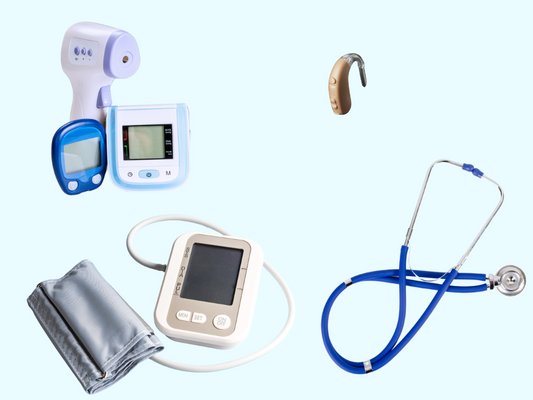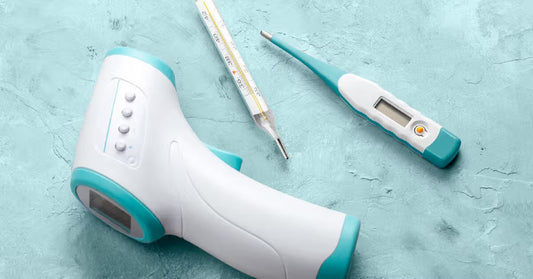
Ultimate Guide To Choosing A Blood Pressure Monitor
Are you concerned about your blood pressure and looking for a reliable way to monitor it from the comfort of your own home? Look no further! Choosing the right blood pressure monitor can be a daunting task, but with the right guidance, you can find the perfect device to suit your needs.
With our comprehensive guide, you’ll have all the information you need to choose the monitor that’s right for you. We’ve got you covered when it comes to the different types of monitors available, the features to consider, and the top models on the market. Start monitoring your blood pressure accurately and reliably today with our Ultimate Guide. Blood pressure plays a critical role in determining an individual’s overall health and well-being. Regularly monitoring your blood pressure can help you detect any potential health problems early. Monitoring your blood pressure at home can also help you make lifestyle changes and manage any existing conditions more effectively. However, choosing the right blood pressure monitor can be challenging, given the many different types and features available.
In this blog, we will share a detailed guide that aims to provide you with everything you need to know to make an informed decision about which blood pressure monitor to buy.

Importance of Monitoring Blood Pressure
Monitoring blood pressure is important for several reasons:
- Early Detection of Hypertension: Monitoring blood pressure regularly can help detect high blood pressure early, allowing for early intervention and treatment.
- Monitoring Blood Pressure Medication: For people taking medication to manage their blood pressure, monitoring can help ensure that the medication is working effectively.
- Understanding Your Health: Blood pressure can be an indicator of overall health, and monitoring it can help individuals better understand their health status.
- Managing risk: High blood pressure is associated with several health conditions, including heart disease and stroke. Monitoring can decrease the likelihood of developing these conditions and help manage the risk.
By monitoring blood pressure regularly, individuals can take a proactive approach to their health and potentially prevent or manage health conditions related to high blood pressure.

Reliable and Accurate Blood Pressure Monitoring
There is a need for an accurate and reliable blood pressure monitor because high blood pressure (hypertension) is a serious health condition that can lead to several complications, including heart attack, stroke, and kidney disease. An incorrect blood pressure reading can lead to incorrect diagnosis and treatment, with potentially serious health consequences.
Moreover, regular monitoring of blood pressure is essential to manage hypertension effectively. A reliable blood pressure monitor allows individuals to monitor their blood pressure regularly and track any changes, enabling them to make informed decisions about their health and treatment.
Therefore, it is crucial to choose an accurate and reliable blood pressure monitor that provides precise readings and is validated for accuracy. By doing so, individuals can better manage their blood pressure, reduce their risk of complications, and improve their overall health.
Different Blood Pressure Monitors
There are several types of blood pressure monitors available on the market, each with its unique features and benefits. Blood pressure monitors are available in three main types: upper arm, wrist, and finger.
- Upper Arm Blood Pressure Monitors are the most prevalent type of blood pressure monitor and are commonly used in doctors’ offices. Upper arm cuffs are wrapped around the gauge, which displays readings.
- Wrist Blood Pressure Monitors are similar to upper arm monitors, but the cuff is wrapped around the wrist. They are more portable than upper-arm monitors but may be less accurate.
- Finger Blood Pressure Monitors are compact and portable but may be less accurate than upper arm or wrist monitors. In these devices, the finger is wrapped around a cuff and the readings are displayed on a display.
- An ambulatory Blood Pressure Monitor is worn around the wrist or waist all day and night and automatically takes readings. They provide more accurate readings over an extended period and are useful for people with white coat hypertension or who are being treated for hypertension.
-
Digital Blood Pressure Monitors: digital blood pressure monitors feature intuitive one-touch operation as well as advanced averaging to deliver accurate measurements. Featuring a compact design and a standard cuff, it is a great choice for anyone who needs to measure their blood pressure on the go. In terms of reliability and user-friendliness, a Digital blood pressure monitor is a great choice.

Choosing the right type of monitor depends on individual preferences and needs. Upper-arm monitors are typically more accurate, while wrist and finger monitors are more portable. Ambulatory monitors are ideal for monitoring blood pressure over an extended period. It’s essential to choose a monitor that is accurate and reliable and meets individual needs.
How to Choose the Right Monitor
Consider your preferences and needs when choosing a blood pressure monitor Canada. An upper-arm monitor, for example, is generally more accurate than one worn on the wrist or finger. However, wrist monitors are more convenient and portable, making them an excellent option for people who need to monitor their blood pressure on the go.
Digital monitors are also available, which can store readings and track changes in blood pressure over time. In comparison to automatic monitors, manual monitors are more affordable, but most of them require a higher level of skill to operate. Ultimately, the best choice will depend on the preferences and needs of the individual.
Checklist For Blood Pressure Monitors
Several factors should be taken into account when choosing a blood pressure monitor:
- Accuracy and Precision: Look for a monitor that has been validated for accuracy and provides precise measurements.
- Display and Readability: Choose a monitor with a clear, easy-to-read display that shows both systolic and diastolic readings.
- Memory and Data Storage: Consider a monitor that stores multiple readings and can track trends over time.
- Battery Life and Power Source: Look for a monitor with long battery life and consider whether it uses disposable or rechargeable batteries.
- Cuff Size and Fit: Ensure that the cuff fits your arm or wrist properly to ensure accurate readings.
- Cost and Value for Money: Consider the price and features of the monitor to ensure that it provides value for your money.
How to Use a Blood Pressure Monitor?
To get accurate and reliable readings from your blood pressure monitor, it’s essential to use it correctly. To use a blood pressure monitor, you should first prepare by avoiding caffeine and alcohol, sitting quietly for at least five minutes, and positioning the cuff at heart level. Then, wrap the cuff snugly around your upper arm or wrist and start the monitor. As the cuff inflates, remain still and quiet until the readings are complete.
Once the readings are done, interpret the results based on the monitor’s instructions and record them if necessary. Measuring each arm or wrist at the same time each day ensures accurate readings. If you’re unsure how to use your monitor, refer to the manufacturer’s instructions or consult a healthcare professional for guidance.
Top Blood Pressure Monitors on the Market
There are several top-rated blood pressure monitors on the market. Here are five of the best:
- Omron 3 Series Upper Arm Blood Pressure Monitor: The OMRON 3 Series home blood pressure monitor is highly accurate and easy to use. Additionally, it has a large, easy-to-read display and can store 14 readings. It comes equipped with a broad D-ring cuff that can comfortably fit arms with circumferences ranging from 9 to 17 inches.
- Withings BPM Connect: Facilitating effortless data tracking and sharing, this monitor comes equipped with Wi-Fi connectivity. It has an intuitive design and provides accurate readings. Up to 8 readings can also be stored with the rechargeable battery.
- Beurer BM55 Upper Arm Blood Pressure Monitor: BM55 is highly accurate and has a large, easy-to-read display. It also has a cuff that adjusts to fit most arm sizes and can store up to 60 readings.
- Greater Goods Balance Blood Pressure Monitor: The monitor is affordable, accurate, and easy to use. It has a large display and can store up to 60 readings. It also comes with a cuff that fits most arm sizes.
- QardioArm Wireless Blood Pressure Monitor: QardioArm monitor is compact, portable, and highly accurate. It can connect to a smartphone app for tracking and sharing data and has a rechargeable battery. It also has a sleek, modern design and can store up to 200 readings.
Conclusion
Monitoring your blood pressure regularly is essential for maintaining good health and preventing serious health problems. Choosing the right blood pressure monitor is crucial to ensure that you get accurate and reliable readings every time. By considering the types of monitors available, the features to consider, how to use a monitor correctly, and the top monitors on the market, you can make an informed decision and take control of your health.
Doing so will help you to improve your productivity, comfort, and overall well-being. While a monitor may not be the most exciting purchase, it can have a significant impact on your life. Therefore, it is important to take the time to research and find the best monitor for you.







